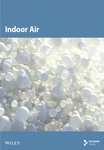Modeling and CFD prediction for diffusion and adsorption within room with various adsorption isotherms
Abstract
Abstract This paper presents physical models that are used for analyzing numerically the transportation of volatile organic compounds (VOCs) from building materials in a room. The models are based on fundamental physicochemical principles of their diffusion and adsorption/desorption (hereafter simply sorption) both in building materials and in room air. The performance of the proposed physical models is examined numerically in a test room with a technique supported by computational fluid dynamics (CFD). Two building materials are used in this study. One is a VOC emitting material for which the emission rate is mainly controlled by the internal diffusion of the material. The other is an adsorptive material that has no VOC source. It affects the room air concentration of VOCs with its sorption process. The floor is covered with an emission material made of polypropylene styrene–butadiene rubber (SBR). An adsorbent material made of coal-based activated carbon is spread over the sidewalls. The results of numerical prediction show that the physical models and their numerical simulations explain well the mechanism of the transportation of VOCs in a room.




